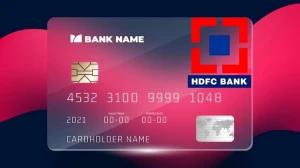
- Home »
- Credit Card »
- Best Credit Cards for Balance Transfers of U.S December 2023
Best Credit Cards for Balance Transfers of U.S December 2023
The best credit cards for balance transfers are Wells Fargo Reflect® Card, U.S. Bank Visa® Platinum Card, Citi Double Cash® Card, Citi® Diamond Preferred® Card, Bank of America® Customized Cash Rewards, Bank of America® Unlimited Cash Rewards, and more.
by Kowsalya
Published Jul 27, 2023 | Updated Dec 09, 2023 | 📖 9 min read
On This Page
Best Credit Cards for Balance Transfers of December 2023
A balance transfer credit card can be an incredibly effective asset in your efforts to conquer debt. Availing of a 0% APR offer on a credit card can result in substantial savings, as your entire payment can be utilized to reduce the principal balance without any portion going toward interest charges.
To determine the most suitable balance transfer card for your situation, be sure to consider the associated fee, the total debt you plan to transfer, and the timeframe within which you aim to settle the outstanding balance.
|
Credit Card |
Best For |
Annual Fee |
|
Wells Fargo Reflect® Card |
Cellphone Protection |
$0 |
|
U.S. Bank Visa® Platinum Card |
No Frills Balance Transfer |
$0 |
|
Citi Double Cash® Card |
Balance Transfer for Cash Back |
$0 |
|
Citi® Diamond Preferred® Card |
Long Transfer Window |
$0 |
|
Bank of America® Customized Cash Rewards |
Choosing Your Own Rewards |
$0 |
|
Bank of America® Unlimited Cash Rewards |
Flat-Rate Rewards Earning |
$0 |
|
Discover it® Cash Back |
Cash-Back Match |
$0 |
|
Bank of America® Unlimited Cash Rewards for Students |
Balance Transfer for Students |
$0 |
|
Citi Simplicity® Card |
Late Fee Forgiveness |
$0 |
|
Chase Freedom Flex℠ |
Rewards and Additional Benefits |
$0 |
|
State Farm Good Neighbor Visa® Card |
Auto Deductible Reimbursement |
$0 |
|
UMB Simply Rewards Visa |
Elevated Earnings in Useful Categories |
$0 |
Wells Fargo Reflect® Card
The Wells Fargo Reflect® Card stands out for its excellent cellphone protection benefits, making it a favorable choice for those seeking coverage for their mobile devices. With a focus on providing security and peace of mind, this card caters to individuals with good to excellent credit.
U.S. Bank Visa® Platinum Card
The U.S. Bank Visa® Platinum Card is designed for those looking for a straightforward balance transfer option without the frills. Boasting a good to excellent credit score requirement, this card offers an efficient solution for individuals aiming to transfer balances seamlessly.
Citi Double Cash® Card
The Citi Double Cash® Card is celebrated as the best balance transfer credit card for cash back. Suited for individuals with excellent, good, or fair credit, this card allows users to earn $200 cash back, making it an attractive choice for those looking to maximize their rewards.
Citi® Diamond Preferred® Card
Catering to those seeking an extended transfer window, the Citi® Diamond Preferred® Card is an excellent option for individuals with good to excellent credit. With a focus on providing a prolonged period for balance transfers, this card allows users to manage their debt strategically.
Bank of America® Customized Cash Rewards
The Bank of America® Customized Cash Rewards credit card is an ideal choice for those who want the flexibility of choosing their own rewards. With a good to excellent credit score requirement, this card offers a $200 welcome bonus, providing an incentive for new cardholders.
Bank of America® Unlimited Cash Rewards
For individuals preferring a flat-rate rewards system, the Bank of America® Unlimited Cash Rewards credit card is a compelling option. With no annual fee and a $200 welcome bonus, this card caters to those with good to excellent credit who seek simplicity and value.
Discover it® Cash Back
The Discover it® Cash Back card is best known for its Cashback Match™ program, doubling the rewards earned in the first year. Suited for individuals with excellent or good credit, this card is an excellent choice for those who appreciate cash-back benefits.
Bank of America® Unlimited Cash Rewards for Students
The Bank of America® Unlimited Cash Rewards credit card for Students extends its balance transfer benefits to students with good to excellent credit. Offering a $200 bonus, this card provides a practical financial solution for students managing their expenses.
Citi Simplicity® Card
Citi Simplicity® Card is designed for those seeking late fee forgiveness. With an excellent or good credit score requirement, this card prioritizes simplicity in managing finances, offering an option for individuals who value straightforward credit card terms.
Chase Freedom Flex℠
The Chase Freedom Flex℠ card is best known for its rewards and additional benefits. With a focus on providing valuable perks, including a $200 bonus and 5% cash back on gas and grocery purchases (excluding Target and Walmart), this card caters to individuals with excellent or good credit.
State Farm Good Neighbor Visa® Card
The State Farm Good Neighbor Visa® Card distinguishes itself with auto deductible reimbursement benefits. Suited for individuals with good to excellent credit, this card offers a practical solution for those looking to save on auto-related expenses.
UMB Simply Rewards Visa
The UMB Simply Rewards Visa stands out for its elevated earnings in useful categories. With a good to excellent credit score requirement, this card provides 15,000 bonus points, making it an attractive option for individuals seeking rewards in areas relevant to their spending habits.
What is a Balance Transfer?
A balance transfer is a strategy to reduce the cost of existing high-interest debt by moving it to a credit card with a lower interest rate or, ideally, one offering a 0% APR introductory period for balance transfers. However, it's essential to be aware that a balance transfer may come with a transfer fee, typically ranging from 3% to 5% of the amount being transferred.
Before deciding to proceed with a balance transfer, it's crucial to do the math and consider the overall financial impact. While a 0% APR offer can save you money on interest charges during the introductory period, the transfer fee will be added to your debt. It's essential to assess whether the amount you'll be paying in balance transfer fees exceeds the interest savings you'll gain from the transfer. If the fees outweigh the interest savings, it might not be a financially wise decision to proceed with the balance transfer.
Careful evaluation and understanding of the numbers will help you make an informed choice and determine whether a balance transfer is the right move for your financial situation.
MarketsHost warmly invites you to an immersive experience, where we unveil the intricacies of Credit Cards, enabling you to make informed financial decisions with confidence.
What is a 0% Balance Transfer?
A 0% balance transfer involves transferring your existing debt to a credit card that offers a promotional 0% interest rate on the transferred amount. This can be a smart financial move, as during the promotional period, all your payments go directly toward reducing the principal debt, without any additional finance charges accumulating.
However, it's crucial to note that these 0% APR offers are not indefinite and typically last for a limited duration, usually ranging from six months to almost two years. Once the introductory period ends, any remaining balance will be subject to the card's regular interest rate.
While a 0% balance transfer can save you money on interest during the promotional period, it's essential to be aware that it may not be entirely cost-free. Some credit cards may charge a balance transfer fee, which is a percentage of the amount being transferred. This fee needs to be factored into your calculation to determine whether the balance transfer will indeed be a financially beneficial decision.
How Does Balance Transfer Work?
The primary objective of a balance transfer is to reduce the cost of existing debt. This is achieved by transferring the debt from one credit card to another, preferably to a new credit card with a lower interest rate. Once the transfer is completed, you'll be required to make payments on the new credit card, focusing on paying down the transferred balance.
It's important to note that while most credit cards offer balance transfer facilities, some may impose balance transfer fees. Therefore, before deciding to proceed with a balance transfer, it's crucial to consider the overall financial benefit. This means evaluating whether the new card has a lower interest rate than your existing debt or offers a favorable low or 0% promotional interest rate.
To maximize the benefits of a balance transfer, it is advisable to refrain from making additional purchases on the new credit card. By concentrating solely on paying down the transferred balance, you can effectively save money on interest charges and work towards becoming debt-free more efficiently.
How to Choose a Balance Transfer Credit Card?
Choosing the right balance transfer credit card requires careful consideration of various factors to ensure you maximize the benefits of the transfer. Here's a detailed guide on how to choose a balance transfer credit card:
Balance Transfer Fees
Look for cards with low or no balance transfer fees to minimize costs during the transfer.
Issuing Bank
Choose a card from a different bank than the one you're transferring debt from, as most banks don't allow transfers between their own cards.
Length of Transfer
Consider the duration of the 0% APR offer. Longer periods provide more time to pay off debt, but be mindful of potential higher balance transfer fees.
Credit Score
Check the credit score requirements. Some cards may have specific criteria, and if your credit is less than stellar, you might not qualify for certain cards.
Interest Rates
Evaluate ongoing interest rates post the introductory period. A card with a consistently low interest rate may be preferable for long-term use.
Zero or Low Interest
Decide between zero-interest or low-interest offers. While zero interest is appealing, a low ongoing interest rate might be more suitable for long-term use.
Introductory Offer Duration
If seeking short-term relief, compare cards with the longest introductory offers. Consider the overall cost by factoring in balance transfer fees.
Credit Card Long-Term Value
Assess if the card has additional perks or rewards beyond the introductory offer, making it useful even after paying off the transferred debt.
How to Apply for a Balance Transfer Credit Card?
Applying for a Balance Transfer Credit Card is a straightforward process that involves careful consideration of your financial goals and selecting a card that aligns with your needs.
Set Clear Goals
Define your goals for the balance transfer, such as paying off debt quickly or having a longer repayment period.
Check Credit Report
Ensure your credit report is error-free to enhance your chances of approval.
Research Suitable Cards
Determine which balance transfer card aligns with your goals, considering factors like fees, introductory APR, and long-term benefits.
Online or In-Person Application
Choose between applying online or in person at the issuing bank if applicable. Most applications are conveniently done online.
Provide Personal Information:
Fill out the application with the essential details:
- Name
- U.S. address
- Social Security or ITIN number
Financial Information
Share your income and housing costs, as this, along with a hard credit pull, influences your credit limit.
Submit Application
Submit the application online or in person. Approval timelines vary, with some issuers providing instant decisions.
Best Credit Cards for Balance Transfers of U.S December 2023 - FAQs
1. What is a balance transfer credit card?
A balance transfer credit card is a type of credit card that allows you to transfer existing debt from one card to another.
2. How can a balance transfer credit card benefit me?
A balance transfer credit card can benefit you by providing temporary relief from high interest rates on existing debt.
3. What should I consider when choosing a balance transfer credit card?
When choosing a balance transfer credit card, consider factors like the length of the introductory APR period, the balance transfer fee, the ongoing APR after the introductory period ends, and any additional perks or rewards offered by the card.
4. Is there a limit to how much I can transfer with a balance transfer credit card?
Yes, there is typically a limit on the amount you can transfer with a balance transfer credit card.
5. Are there any fees associated with balance transfers?
Yes, balance transfer credit cards may come with a balance transfer fee, typically ranging from 3% to 5% of the transferred amount.




